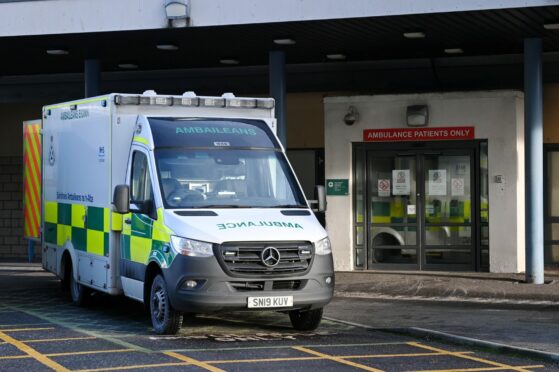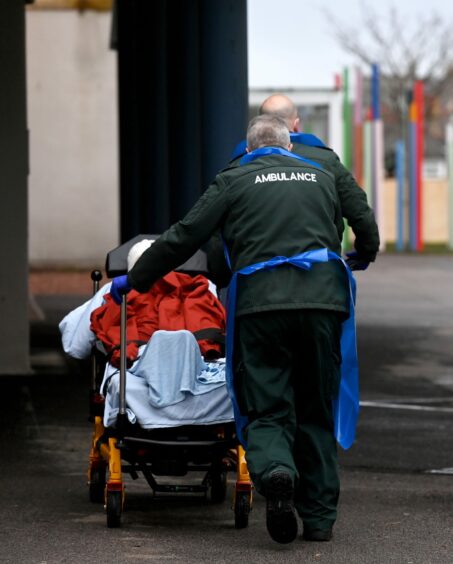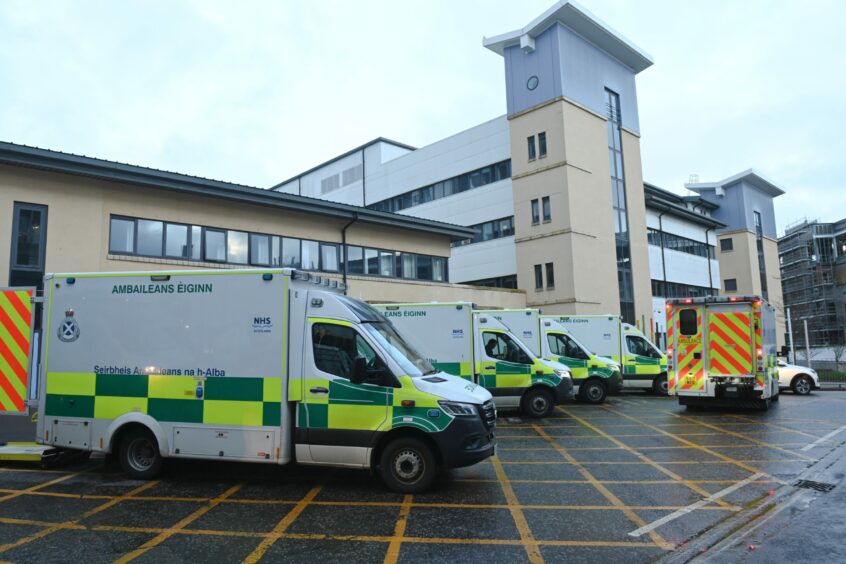A shock report has detailed the crisis inside Aberdeen Royal Infirmary after a major incident was declared as medics struggled to cope.
Hospital bosses declared the major incident on February 22 as ambulances queued up outside ARI.
Witnesses reported “pandemonium” as emergency crews were unable to drop patients off at the A&E department.
Staff were overworked dealing with the number of patients.
Staff goodwill so low only one nurse responded to major incident
An internal probe found multiple failings, including confusion among staff about whether a major incident had been declared and what this meant.
The incident allowed NHS Grampian to call in off-duty staff and put in place measures to deal with the rising demand.
But the report said staff goodwill was so low only one nurse responded.
Others working on the day questioned why the incident was declared, pointing out the situation was no different to the previous 24 to 48 hours.
The BBC, who obtained the review, also reported a lack of beds and mattresses at the hospital to accommodate the influx of patients requiring help.
The report concludes that “some staff are beginning to doubt the goodwill of their colleagues to respond to anything other than what they recognise as a spontaneous major incident”.
It comes after NHS Grampian clinicians issued a stark warning about staffing levels in the health board’s A&E departments.
Whistleblowers say staff shortages mean no senior doctors are available during weekend night shifts to make “key decisions” over patient care.
Concern over winter readiness
North East MSP Tess White says she is concerned by the report’s findings and whether the appropriate planning was in place to prevent a repeat this winter.
Ms White, Tory public health spokeswoman, said: “Months before the incident referred to, constituents had been in touch with me over ambulances stacking up outside ARI.
“I asked the deputy chief executive of NHS Grampian about that in the health committee last September.
“Dr Coldwells was very informative about a raft of changes the board had made to speed up admissions. It was obvious the team there could see the dangers and were trying their best to stretch limited resources.
Major incidents ‘thankfully’ rare
“But if that’s not worked going into the last winter, it raises questions whether similar distressing scenes will happen again in the months to come.”
She wants a winter planning update from health secretary Michael Matheson.
An NHS Grampian spokeswoman said the major incident was subject to a debrief to establish how the health board could learn from the event.
She said: “A hospital major incident was called in February at a time when there was exceptional pressure in our system. This was stood down within hours when the situation improved.
“These major incidents are an internal trigger point, called to allow us to focus on areas with greatest need until the pressure has eased.
“This can be due to staffing, hospitals being full and indeed the number of very ill patients being admitted.
“Whilst thankfully they don’t happen frequently, we are able to act in an agile way to find solutions. Every incident is followed by a full debrief for future learning.”



Conversation